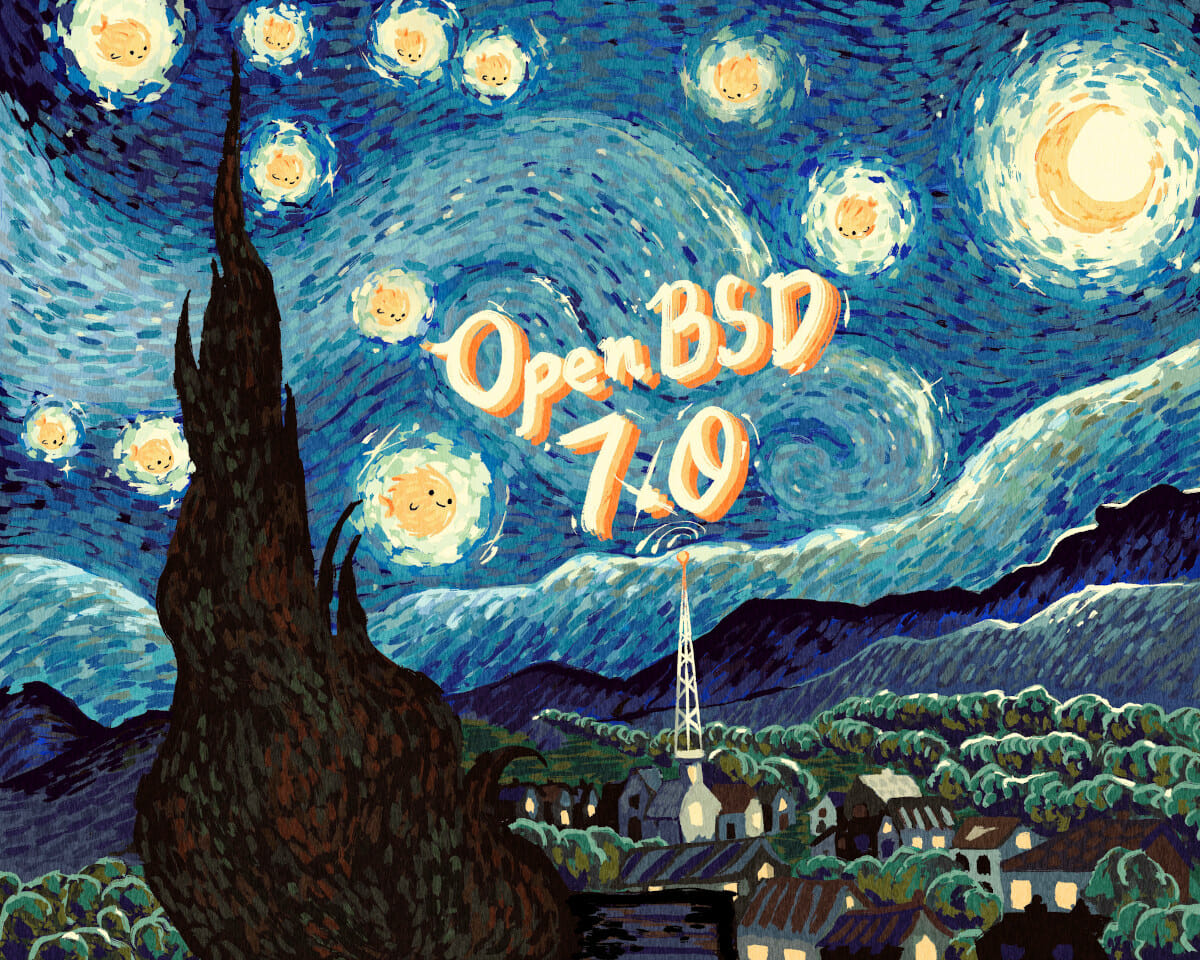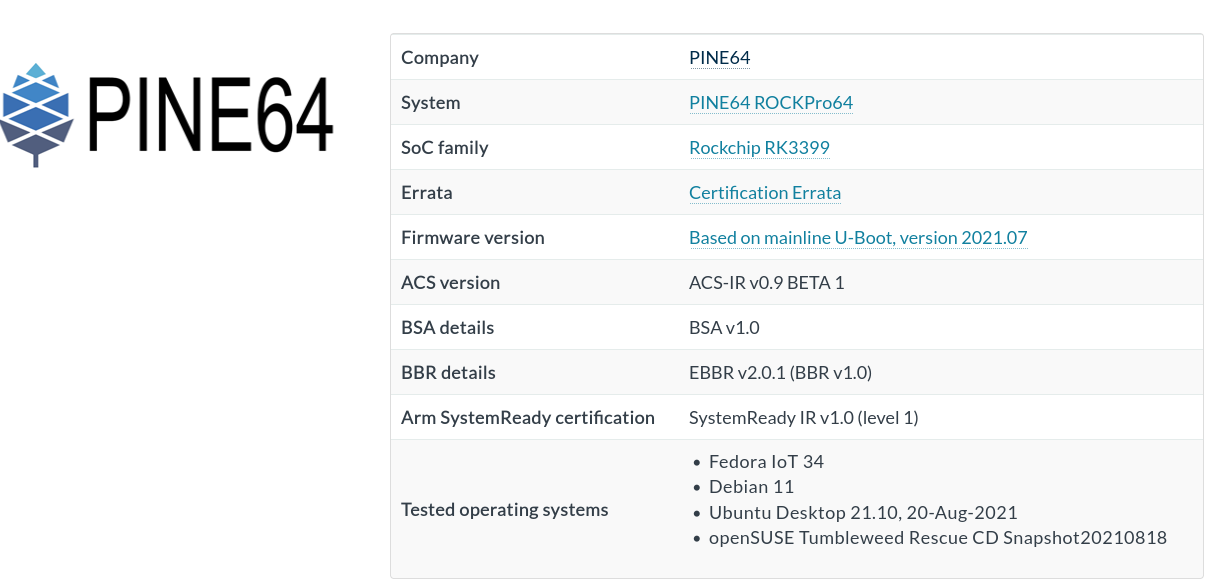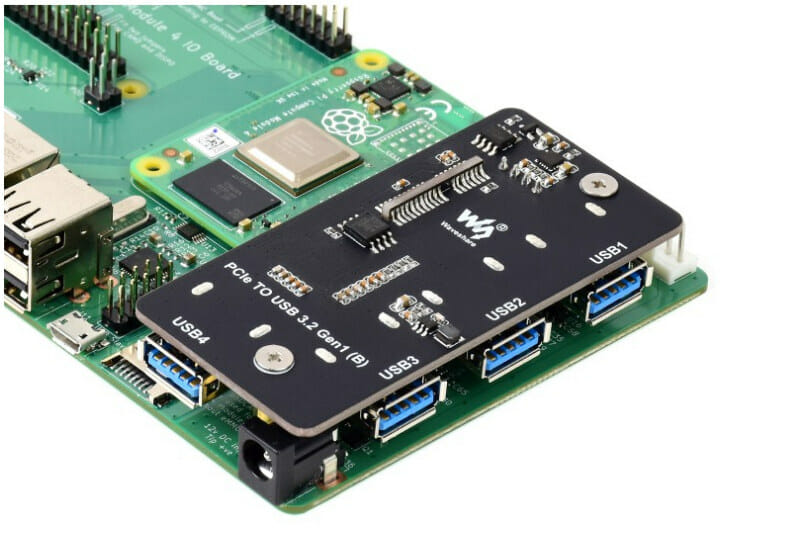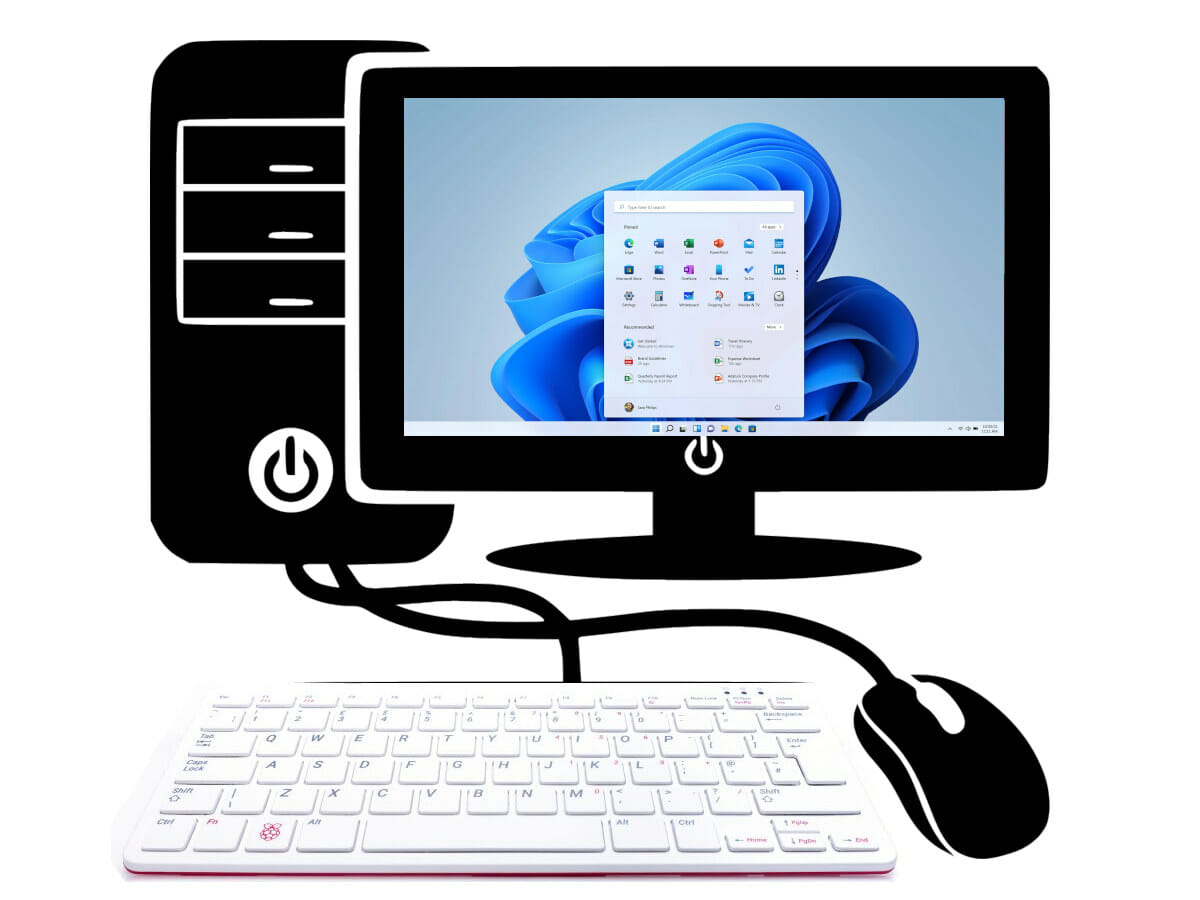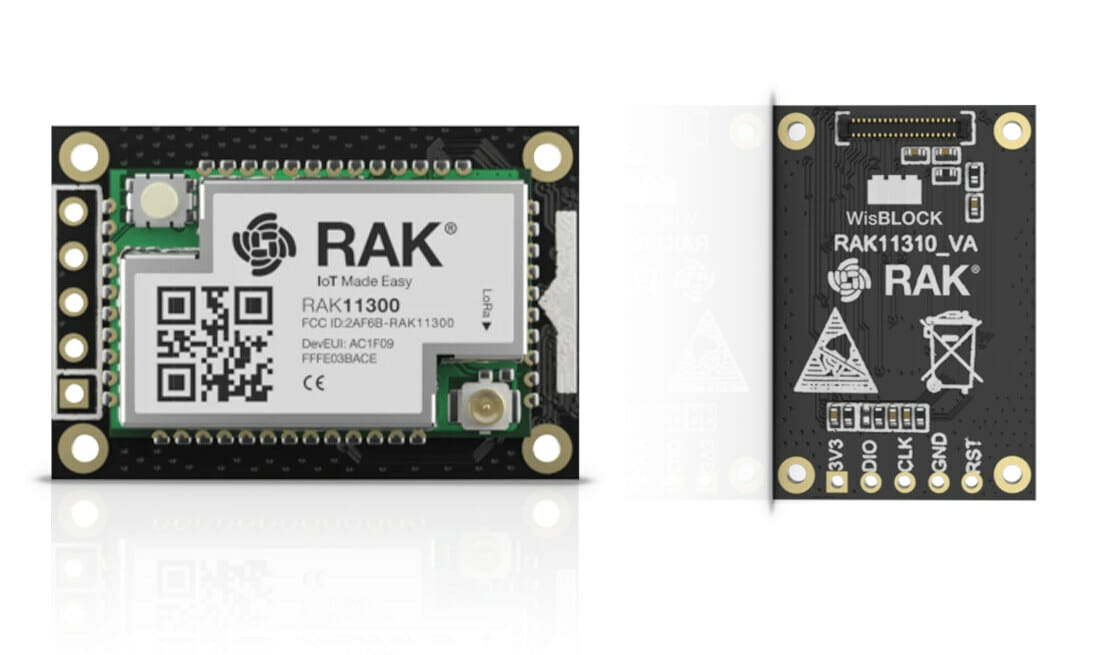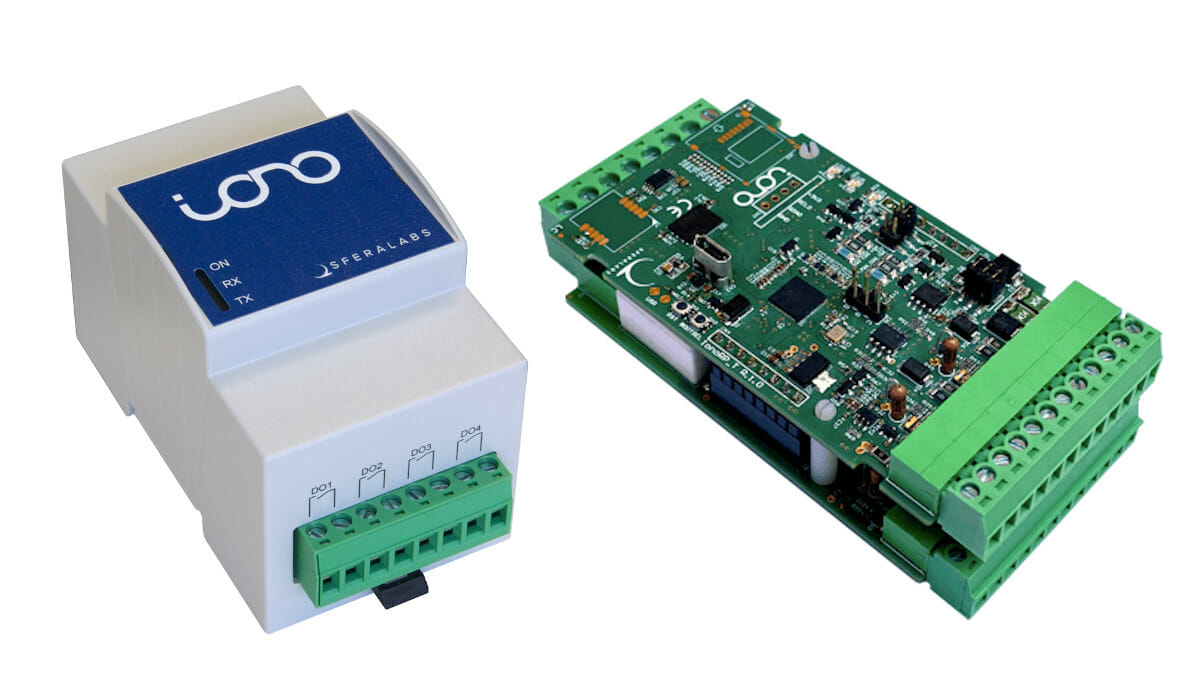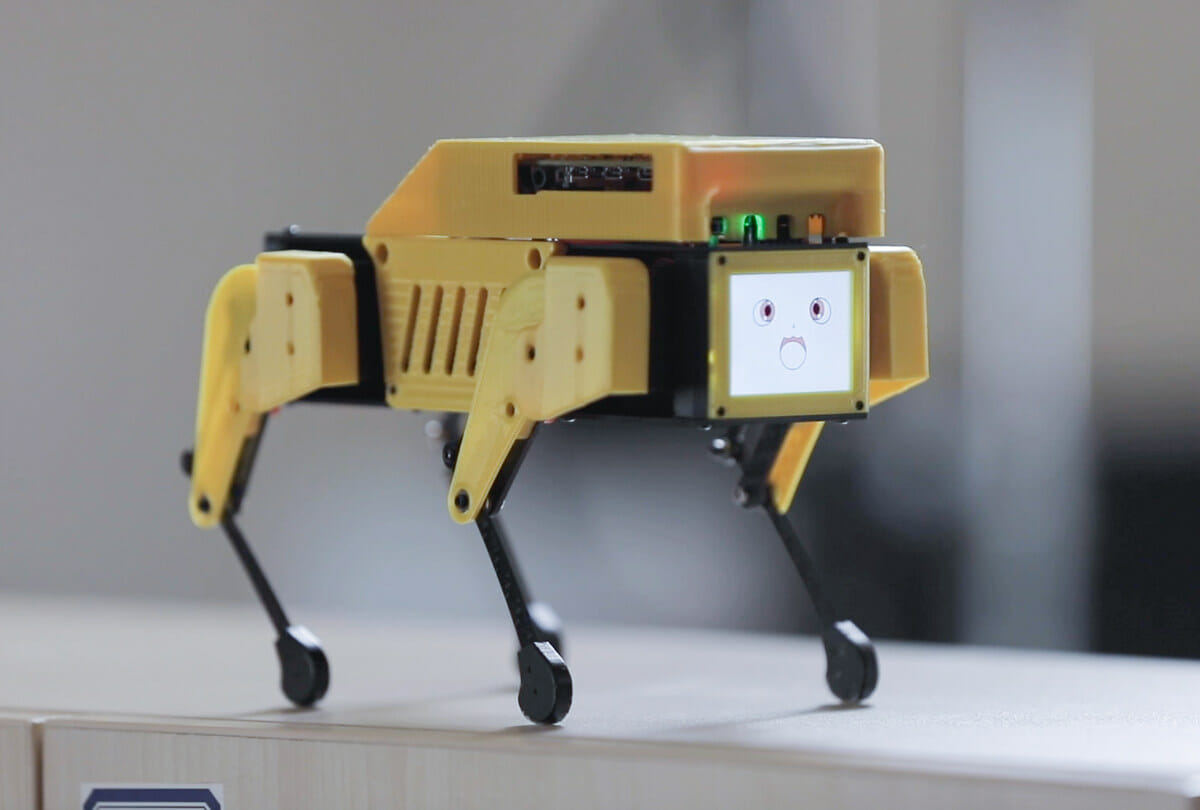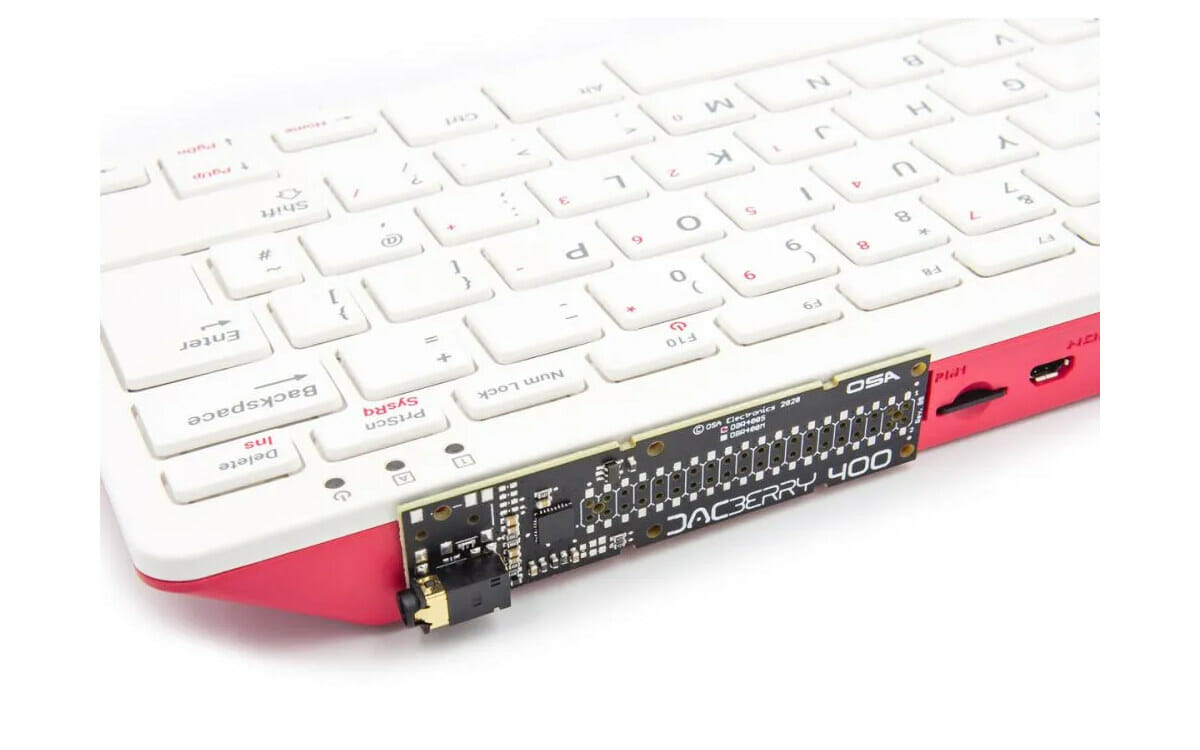OpenBSD 7.0, the 51st release of the UNIX-like operating system, was outed on October 14, 2021, with the introduction of 64-bit RISC-V support for HiFive Unmatched and PolarFire SoC Icicle Kit boards, as well as further improvements to ARM64 targets, notably for Apple Silicon Macs, although it’s not quite ready for general use yet. You’ll find the complete list of new features and updates on the OpenBSD website, but here are some of the highlights: New platforms – OpenBSD 7.0 add 64-bit RISC-V support Extended platforms arm64 Improvements to Apple Silicon Macs support USB 3, NVMe storage, GPIO driver, power management, etc… Enabled LEDs for the LAN7800 chip as found on the Raspberry Pi 3 Model B+. Added Type-C PHY controller found on the Rockchip RK3399. Implemented multicast support to Marvell ARMADA chips Various other changes to mips64, amd64, armv7, powerpc64 Kernel improvements Enabled dynamic tracker (dt) for GENERIC kernels […]
Raspberry Pi 4, Rockchip RK3399 SBC’s get Arm SystemReady IR certification
The first hardware platforms getting Arm SystemReady IR certification for IoT Edge applications were announced a few months ago with namely NXP i.MX 8 Mini evaluation kit and Compulab IOT-GATE-IMX8 gateway being able to run off-the-shelf operating system images such as Fedora IoT, OpenSuSE Leap 15.3, and Debian 11 thanks to UEFI firmware. But following PinePhone Pro Linux smartphone announcement, and Pine64 October update, we also learned that Rockchip RK3399 based RockPro64 was also Arm SystemReady IR certified, and check Arm’s website directly revealed it was joined by Lenovo Leez P710 “Gateway” SBC, as well as Raspberry Pi 4 and Pi 400 platforms. Let’s check the details and see what off-the-shelf images each board has been tested with. Pine64 RockPro64 RK3399 SBC achieved SystemReady IR v1.0 Level 1 certification meaning it complies with some waivers and workarounds found in the errata document. The board has been successfully tested with Fedora […]
PCIe adapter adds four USB 3.2 ports to Raspberry Pi CM4 IO board
Waveshare has introduced a non-standard PCIe adapter that adds four USB 3.2 ports to the Raspberry Pi Compute Module 4 IO carrier board in a way that does not take too much height. It’s non-standard as it can not be inserted directly into a typical computer PCIe slot, and Waveshare recommends a PCIe extension cable to connect it to a motherboard. Having said that It looks much better on the IO board. Waveshare USB PCIe adapter features: PCIe host interface 4x USB 3.2 Gen1 ports, USB 3.0 / 2.0 / 1.1 compatible Onboard VIA Labs VL805 chip as found on Raspberry Pi 4 SBC Power supply – 12V via PCIe connector or 4-pin header Designed for Raspberry Pi Compute Module 4 IO Board Dimensions – 82×39 mm Since it’s basically using the same design as Raspberry Pi 4 providing USB ports through the same VL805 PCIe chip, there’s no […]
Using Raspberry Pi 400 keyboard PC as a USB keyboard for your PC
Let’s try not to get confused, but you can now use Raspberry Pi 400 keyboard PC as a standard USB keyboard, optionally with a mouse attached to it, for your computer, or twisted minds may even connect it to a Raspberry Pi SBC… “But why?” you may ask. Because we can. That’s now possible thanks to work from Phil Howard (Gadgetoid), software lead of Pimoroni, and his Pi400kb project which implements a raw HID keyboard forwarder that turns the Raspberry Pi 400 into a standard USB keyboard. All you need to do is to find a USB-C to USB-A cable to connect the Raspberry Pi 400 to one of the USB ports on your computer, change some Raspberry Pi OS configuration, and install and run pi400kb. Add dtoverlay=dwc2 to /boot/config.txt in order to use the dwc2 USB device/gadget mode, and reboot your Pi 400 Load the libcomposite kernel module, get […]
RAK introduces Raspberry Pi RP2040 based LoRaWAN core, more Wisblock modules
RAKwireless has just launched the RAK11310 WisBlock LPWAN Module with Raspberry Pi RP2040 MCU and LoRaWAN connectivity, as announced after launching 14 new WisBlock modules for IoT prototyping last July. The RAK11310 module was introduced as part of the “Just Track It RAK Autumn Launch 2021” event together with the smallest WisBlock Base Board so far, as well as 11 new Wisblock modules which bring the total to 47 modules. RAK11310 – Raspberry Pi RP2040, LoRaWAN connectivity RAK11310 specifications: RAK11300 WisDuo LPWAN Module MCU – Raspberry Pi RP2040 dual-core Cortex-M0+ microcontroller @ 133MHz with 246 kB RAM LoRa connectivity SX1262 LoRa transceiver Worldwide frequency coverage RAK11310L – EU433, CN470 RAK11310 – EU868, US915, AU915, KR920, AS923, IN865, RU865 LoRaWAN 1.0.2 protocol stack (supports Class A & C) I/O ports – UART, I2C, GPIO, USB through a “Wisconnector” Debugging – Serial Wire Debug (SWD) interface Supply Voltage – 2.0 V ~ […]
Iono RP – An industrial PLC with a Raspberry Pi RP2040 MCU
Raspberry Pi RP2040 MCU has been used in many boards, but I think I had seen the dual-core MCU in a PLC, or even any industrial products just yet. Sfera Labs Iono RP is a compact I/O module (PLC) with a Raspberry Pi RP2040 microcontroller that’s programmable in C/C++ and MicroPython, or even the Arduino IDE. The DIN-Rail mountable, RP2040 based industrial PLC offers digital and analog input and output lines, power relays, and an RS-485 interface, supports power input from 12V-24V with all signals accessible through terminal blocks. Sfera Labs can also provide some optional options such as an RTC or an earthquake sensor module. Iono RP PLC specifications: MCU – Raspberry Pi RP2040 dual-core Arm Cortex-M0+ @ 133MHz with 264kB on-chip SRAM Storage – 16MB SPI flash, optional microSD card slot Communication interface – standard RS-485 interface with electrostatic discharge protection Inputs/Outputs via terminal blocks 4x power relay […]
Mini Pupper – Raspberry Pi 4-based robot dog teaches ROS, SLAM, navigation, computer vision (Crowdfunding)
Mini Pupper is a Raspberry Pi 4 powered robot dog inspired by Stanford Pupper open-source quadruped robot, and designed in “light collaboration” with Nathan Kau, the original creator of Stanford Pupper. Just like the original design, MangDang’s Mini Pupper is open-source, based on Ubuntu and ROS (Robot Operating System), and designed for robotics education in schools, homeschool families, enthusiasts and others, with notably students being able to learn out to use ROS, SLAM, navigation, and OpenCV computer vision through online courses that will come with the robot. Mini Pupper key features and specifications: SBC – Raspberry Pi 4 Model B with 2GB RAM Storage – 2GB microSD card Display – 320×240 LCD for facial animation Camera – Support for OpenCV AI Kit Lite 12 DOF via MangDang’s custom servos Optional Lidar module for SLAM (Simultaneous localization and mapping) Battery – 800 mAh Charger – Input voltage – 100-240V AC 50/60Hz, […]
Add an audio jack to Raspberry Pi 400 with the DACBerry 400
The Raspberry Pi 400 is a keyboard PC with most of the features of Raspberry Pi 4 SBC, with one of the exceptions being the lack of AV port. But you can now add a 3.5mm audio jack to the Raspberry Pi 400 through the DACBerry 400 S expansion board that connects to the 40-pin GPIO header. It’s a neater way than using a cheap USB audio dongle with microphone and headphone jacks, as it takes less space, and does not occupy any of the USB ports from the Raspberry Pi 400, and it does not prevent you from using the GPIO header. It’s also better suited for headphones with both microphone input and analog stereo audio output into a single jack, and probably comes with better audio quality than the low-cost USB dongles. DACBerry 400 S (DBR400S) specifications: Gold-plated 3.5mm headset/headphone jack (mic in – stereo out) DAC SNR […]


